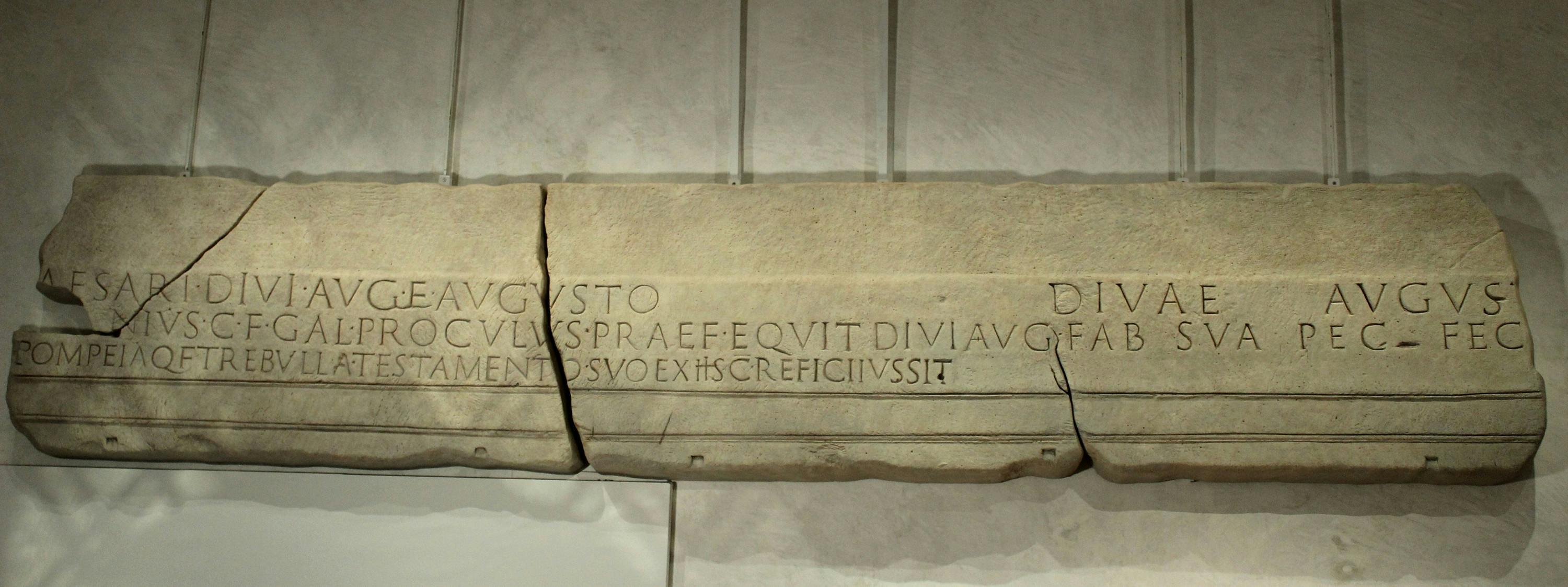Dedication of the temple of Terracina
Roman art
The cast reproduces in scale 1:1 the dedication of the temple erected in Terracina in honor of the emperor Tiberius and his mother, Livia Drusilla, by then Julia Augusta, accepted into the gens Iulia through adoption via her husband's will, and the first woman to be named Augusta
The construction of the temple, financed by the knight M. Junius Proculus, can be dated to between 14 and 29 AD, that is, between the new prince’s rise to power and Livia’s death. However, the dedication was later adjusted when it was restored, after 42 AD, correcting the name of Tiberius' mother to Diva Augusta, following the deification ordered in 42 AD by Prince Claudius, shortly after his rise to power. And the temple of Terracina is thought to have been restored precisely during the reign of Claudius (41-54 AD), when the figures of Tiberius, the new prince's paternal uncle, and his grandmother Livia, who had just been deified, became key elements in the presentation of the first Claudius of the dynasty. In fact, he had reached the imperial throne without being officially appointed, following the murder of his predecessor, his nephew Gaius Caligula. It is reasonable to believe that this was the occasion on which the city of Terracina decided to add new luster to the temple that celebrated the prince's most illustrious ancestors. However, it is significant that it was a matron, Pompeia Trebulla, and not a decurion or a member of the two highest ranks, the equestrian and the senatorial orders, who took on the task of demonstrating the city's loyalty to the imperial house. Trebulla made a testamentary bequest of no less than 100,000 sesterces for this purpose, an act that showed both her wealth and her influence within the city. It was also a concrete example of the new possibilities of public intervention now available to the members of the elite in the wake of the prerogatives assigned to the women of the imperial house.
The temple was still standing at the beginning of the 16th century, when Baldassarre Peruzzi reproduced it in his Taccuino dei viaggi; dismantled a few years later, between the end of the 16th and the beginning of the 17th century, and transported to Florence, all that remains of it today is the honorary inscription preserved in the Cortile dei Fiorentini in the National Archeology Museum in Florence (inv. 889.
The cast was made for the exhibition “Imperatrici, matrone, liberte. Volti e segreti delle donne romane”.
